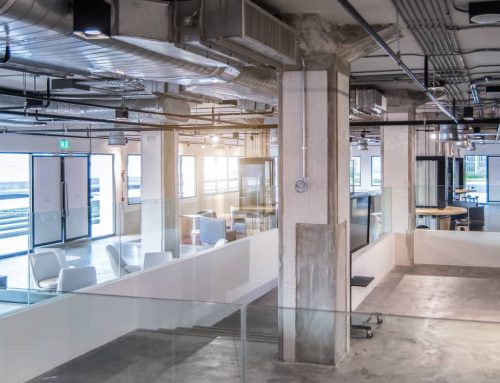We’re in the midst of hurricane season now until November 30th and for our customers along in southern and eastern US we want to share some valuable information.
Most commercial, industrial, and hospitality facilities along the Atlantic and Gulf Coasts have been built to withstand the effects of hurricane-force winds but building managers can take a number of additional steps to mitigate the damage and safety hazards that might occur during major storms. Proactive actions can go a long way to help protect your employees, your facility, your equipment/inventory, and help the utility companies when and if they need to restore service in your area.
Understand Your Risks
The four key traits of a hurricane are high wind speeds, storm surges, torrential rains, and tornadoes and any one of these can put your business at risk for damage during a storm. The FEMA Flood Map Service Center provides a range of information to help you determine how susceptible your business is to flooding and storm damage. You can also request an inspection by a licensed professional to help you assess possible threats to your facility from high winds and other storm surges.
Another helpful way to identify risks is to complete the Back-to-Business Self-Assessment which is part of a comprehensive hurricane toolkit from www.ready.gov. This assessment will help determine the specific areas your organization may need to address to prepare, mitigate risk, and return to operation following a disaster. The toolkit also includes many other tools and resources for the obstacles you might run into before, during, and after a hurricane.
Plan Your Disaster Response
Although most major commercial and hospitality facilities have well-established disaster response plans in place, conducting an audit of your emergency strategy is never a bad idea. Before a storm hits, be sure to:
- Review the company’s property insurance policy to ensure the business is adequately covered against major storm damage. Back this up with photographs or videos of the business premises, taken from all angles. This will help substantiate insurance claims, if necessary, at a later date.
- Remind staff of all hurricane-related policies and procedures, and inform essential employees of their specific roles and responsibilities in the event of an emergency. In a hotel or resort setting, clearly communicate safety policies and procedures to all guests.
- Make sure all emergency supplies are adequately stocked. This could include generators, sandbags, hand tools, and other essential items your business might need during a prolonged power outage and flooding.
- Revisit plans for protecting equipment, inventory, or technology and also make certain critical data is secured through a backup system.
It is even more important to have an evacuation plan in place to ensure that all people in the building can get to safety in case a hurricane may affect the area. A thorough evacuation plan should include:
- Conditions that will activate the plan
- Chain of command
- Emergency functions and who will perform them
- Specific evacuation procedures, including routes and exits
- Procedures for accounting for personnel, customers, guests, and visitors
- Safety equipment for personnel and guests
In addition to having evacuation plans in place, it is important to be familiar with the warning terms used for hurricanes, as well as your local community’s emergency plans, warning signals, and shelters. Hurricane/Tropical Storm watches mean that a hurricane or tropical storm is possible in the specified area. Hurricane/Tropical Storm warnings mean that a hurricane or tropical storm is expected to reach the area, typically within 24 hours.
Be prepared to follow real-time instructions from the local authorities and to evacuate if instructed to do so.
Prepare as the Storm Approaches
As soon as a warning is issued for a hurricane or tropical storm, property managers should check the facility’s interior and exterior surroundings and take appropriate safety measures.
- Bring in exterior equipment, furniture, or displays and remove any outdoor signs or other items that could become airborne in high winds. Board up glass doors and windows or tape an “X” over them to prevent shattering.
- Disconnect all electrical devices except for refrigerators. Experts also recommend turning off electricity (except for those circuits running refrigeration) at the power supply box.
- Clear all desk or work surfaces of small items, and take down all loosely secured items hung on the walls.
- Move equipment and furniture away from windows. For maximum security, relocate critical files and equipment to the innermost rooms of the office building.
- Make sure key employees know the safety protocols and procedures to account for all customers and guests.
- Review the processes and procedures that will need to take place before allowing people back in the building once the storm has passed.
- Shut down non-critical building systems when everyone has been evacuated.
Assess After the Storm Passes
If you facility has suffered damage, personnel should wait to return to the building until authorities indicate it is safe to do so. A designated emergency response team should then conduct an assessment of the property before allowing people back onto the premises. These individuals can help identify any structural damages or hazards that may need to be addressed before the building can be occupied.




